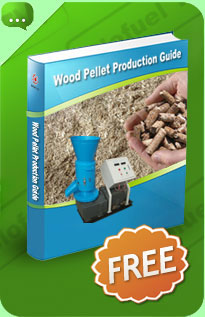Sawdust Pellet Mill
We can see a variety of pellet mills on the market, ranging from small pellet mill to large-scale one, including sawdust pellet mill which best suits most customers' requirements.
For Pellet Mills to operate successfully there are three imperatives:
1. Moisture content of raw materials must be kept below 16%
To produce a quality pellet, massive mechanical pressure is required to create binding of the raw materials. However, the greater the moisture content, the poorer the pellet quality. Additionally, friction within the Pellet Die creates heat and if the Die temperature exceeds approximately 90°C, moisture will begin to gasify. Experience tells us that if moisture content of raw materials exceeds 16%, pellet quality will begin to suffer.
2. Particle size
Material for pelleting should be of a consistent particle size. Shavings will cause blockages in the feed mechanisms and larger bodies (chips and off cuts) can cause mechanical failures. If pelleting straw or reeds, it first needs to be chopped to the point where it will flow into a hammer mill. Sawdust with shavings and straw can be milled through a hammer mill (grinder) with a 6mm screen fitted. Larger bodies should be granulated or milled down to pass through a 6mm screen.
3. Sawdust/reed/straw mixes
Although it is possible to pellet many types of soft and hard woods through a single Die, compression is controlled through the addition of water and pellet binders. Different materials require different levels of additive. So if the materials being presented to the Pellet Mill are constantly varying, it will be very difficult to control pellet quality resulting in too soft or too hard pellets. The same principle applies to straw types or mixtures of straw and wood sawdust. However, if differing materials are presented in a consistent ratio and mix by way of a proportioner mill, additives can be adjusted to suit, and quality pellets will be produced.

